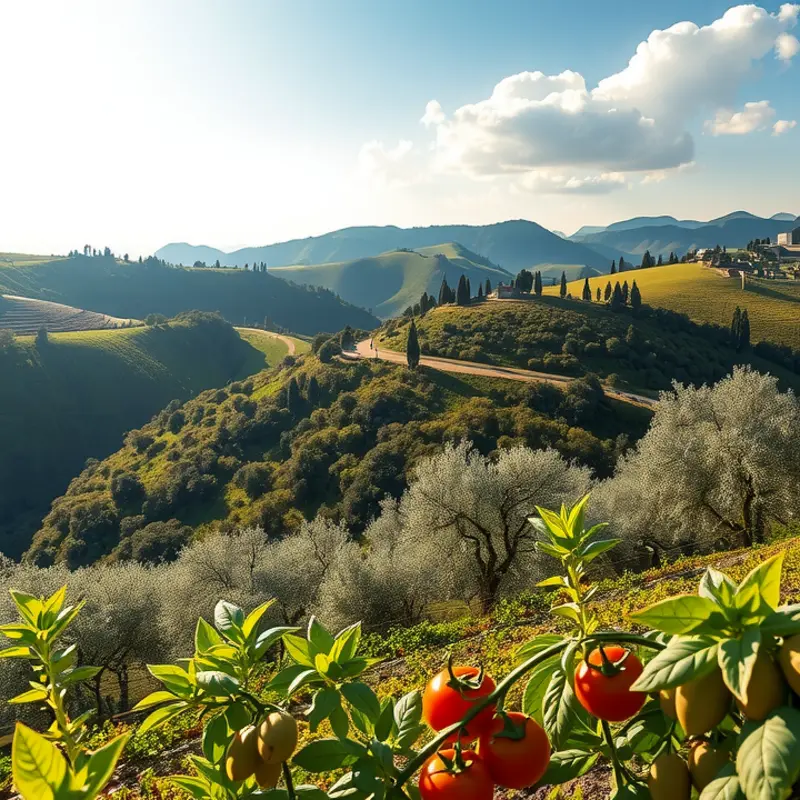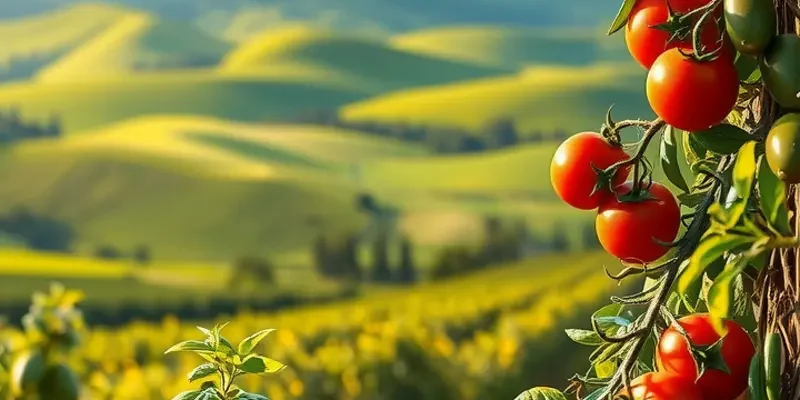Every family has its treasured recipes—culinary heirlooms passed down through generations that weave together stories, cultures, and traditions. These cherished dishes often encapsulate the essence of regional flavors and local ingredients, reflecting the identity of communities around the world. From the spicy curries of India to the delicate pastries of France, each recipe offers a glimpse into the lives, histories, and customs of those who prepare them. Join a journey through various regions as we explore how generational recipes connect family and culture through food.
The Heart of Italy: Family Recipes from the Italian Countryside

Italy, with its rolling hills and vibrant landscapes, is where culinary traditions thrive. Every region boasts unique flavors, but the heartbeat of Italian cuisine often pulses strongly in the countryside kitchens. Imagine the small towns and rural homes where warmth, family, and tradition come together to create timeless dishes.
In Genova, home to the aromatic Pasta al Pesto, recipes are rich with fragrant basil, pine nuts, and aged Parmigiano-Reggiano. These ingredients are traditionally ground with a mortar and pestle, a method passed down through generations. Freshly made pasta, like trenette or trofie, then serves as the canvas upon which this vibrant green sauce is delicately draped.
Moving to Bologna, we encounter the luxurious ragù. Unlike its often-misunderstood American counterpart, authentic Bolognese is slow-cooked with a mixture of pancetta, ground meat, and soffritto, producing a sauce that clings lovingly to tagliatelle. Many Bolognese families still prepare this dish using grandmothers’ handwritten recipes, each one slightly different but deeply cherished.
Pollo alla Cacciatora, or “hunter’s chicken,” reflects Italy’s countryside ingenuity of using local produce and simple preparation. This dish combines farm-raised chicken with robust ingredients like tomatoes, onions, and olives, then simmers together to create a comforting embrace of flavors. Over the years, families have adapted these recipes to the availability of seasonal ingredients while retaining the essence of their heritage.
Grandparents in Italy often play a pivotal role in safeguarding culinary customs. Teaching the art of handmade pasta to grandchildren is not only a ritual but a celebration of family bonds. From forming delicate strands of spaghetti to perfecting the delicate edges of tortellini, these techniques are pieces of living history. The importance of using seasonal ingredients is stressed, ensuring the freshest flavors grace every meal. This respect for nature’s cycles remains a fundamental aspect of Italian cooking.
Adaptations of traditional recipes have emerged as families embrace modern considerations such as dietary needs. The use of alternative ingredients can align with nutritional goals without sacrificing authenticity. For instance, those maintaining a plant-based diet can explore substitutions without losing the soul of Italian cuisine.
Despite technological advances and changing times, the heart of Italian cooking remains rooted in family, local produce, and the joy of coming together over a lovingly prepared meal. This chapter has revealed not only the recipes but also the rich stories and emotions imbued in each dish. Every bite offers a taste of Italian life, connecting past and present, seasoned with affection and tradition.
A Taste of Tradition: Generational Recipes from Southeast Asia

Southeast Asia is a tapestry of cultures, each with vibrant culinary traditions. Food here is not just fuel; it forms a social fabric binding families and communities. The region showcases recipes handed down generations, highlighting a love for bold, aromatic flavors.
Let’s start with Vietnam’s Pho, a dish many hold close to their hearts. This noodle soup is a delicate balance of savory broth, rice noodles, tender beef slices, and fresh herbs. Each family boasts its own recipe, a secret blend of spices like star anise and cinnamon. The broth simmers for hours, infusing each drop with flavor. Families often gather over large pots, sharing stories while the aroma fills homes, enveloping them in warmth.
In neighboring Malaysia, Nasi Lemak holds its place as a national dish. The name translates to ‘creamy rice’, cooked with coconut milk and pandan leaves, creating a fragrant, floral dimension. Traditionally served with sambal, fried anchovies, peanuts, boiled eggs, and cucumber slices, it’s a meal for all times—breakfast, lunch, or dinner. This dish, served on banana leaves, brings people together, reflecting Malaysia’s diverse ethnic tapestry and its communal spirit over shared meals.
Crossing over to Thailand, the iconic Khao Soi beckons with a promise of rich flavors. This coconut curry noodle soup captivates with its turmeric-laden broth, topped with crispy egg noodles. It narrates the story of northern Thailand where cuisine often integrates influences from bordering countries like Myanmar. Khao Soi perfectly embodies this idea, featuring bold spices and creamy textures, evoking comfort and complexity in every bite.
Each of these dishes tells more than a culinary story—they recount family histories, migrations, and invaluable time spent in communal cooking. However, these traditions are not immune to modernization. Today’s Southeast Asian kitchens might include influences from global cuisines or adaptations for dietary trends, such as nightshade-free diets, which you can explore further here. This evolution preserves the core spirit while welcoming new narratives.
Holding on to culinary traditions provides a key to embracing heritage. It bridges the gap between the past and the present, ensuring that even with modern tweaks, the essence of familial love and community remains constant. Dishes like Pho, Nasi Lemak, and Khao Soi demonstrate how food becomes a living history, echoing the values, memories, and unity inherent in Southeast Asian culture. It’s this shared culinary experience that truly keeps the flavors of tradition alive.
Final words
Generational family recipes serve not only as culinary delights but as a bridge between past and present, nurturing family bonds while preserving cultural identities. Each region’s unique touch and representation can be experienced through the art of cooking and sharing meals. It’s through these recipes that food enthusiasts and culturally-curious readers alike can appreciate the depth and richness of global traditions. So, gather your loved ones, ignite your curiosity, and embark on your culinary adventure by recreating these treasured family recipes that connect us all through food.








